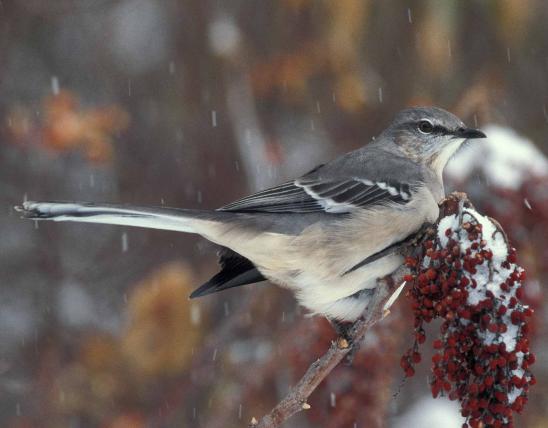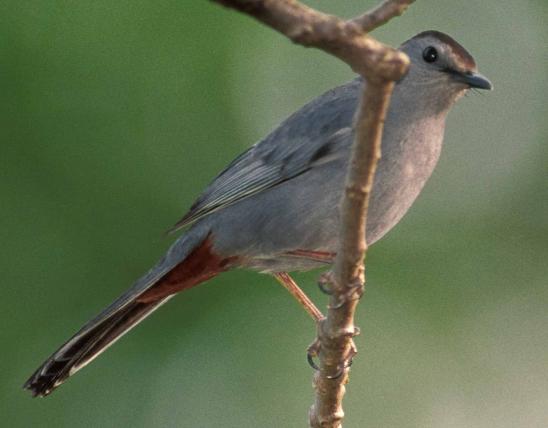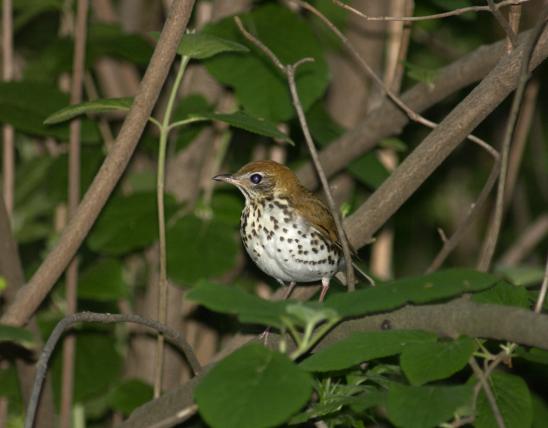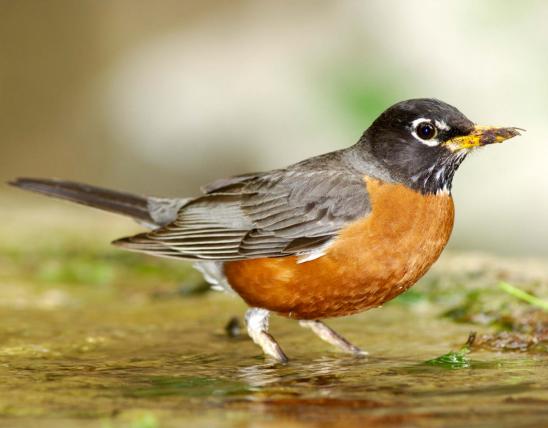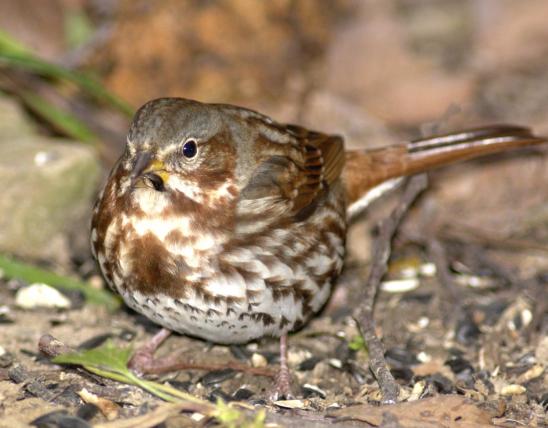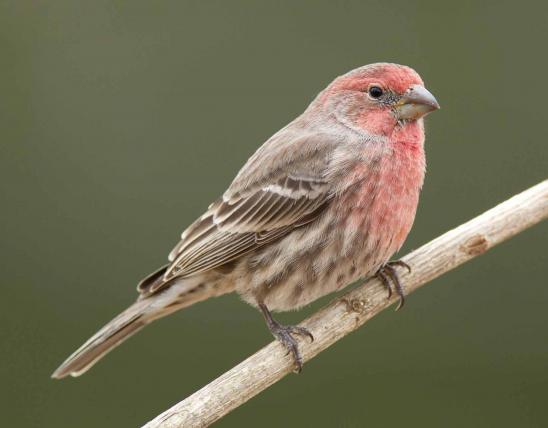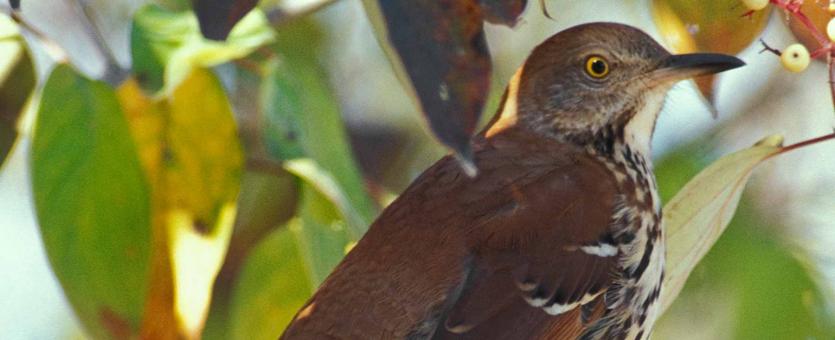
Brown thrasher adult upperparts are reddish brown, with gray cheeks, pale eyes, and a long, downcurved bill. Underparts are white to buff, with heavy dark brown streaks on the breast and belly. The song is a loud, complex series of one- or few-note phrases that are repeated 2 or 3 times; Thoreau, planting his bean field, heard it as “Drop it, drop it — cover it up, cover it up — pull it up, pull it up, pull it up.” The call is a loud smack, much like a quick kissing sound.
Similar species: The wood thrush is chunkier, more robin shaped, with large, dark eyes, a spotted (not streaked) breast, and a much shorter tail. The gray catbird and northern mockingbird are differently colored but they, too, sing “mimic” songs. But the mockingbird’s song is varied, sometimes harsh, with 1 to many phrases that are usually repeated 3–5 times before singing the next. The gray catbird’s song is a confusing jumble of many different phrases, without apparent repetition, often including a rather loud meeoow.
Length: 11½ inches (tip of bill to tip of tail).
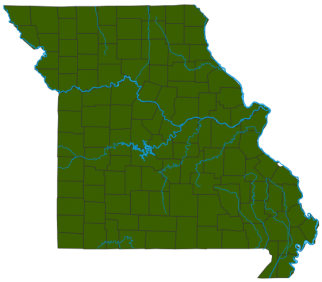
Statewide.
Habitat and Conservation
Common summer resident in open areas with thick shrubs, including woodland edges, roadsides, gardens, parks, and landscaped yards. Rare in winter in tangles and thickets, usually near shrubs and vines bearing fruits. It can be surprisingly difficult to see them, as they lurk amid tangles of vegetation. When they’re singing from high treetops, they are easier to locate.
Food
Brown thrashers forage on a wide variety of insects, spiders, lizards, snakes, and crayfish. They commonly forage on the ground, stalking and hopping about, sweeping their bills back and forth through leaf litter. They also eat berries such wild grapes, holly, pokeweed, sumac, and elderberry.
Status
Common summer resident; rare winter resident. For decades, populations have been declining across North America. Their numbers and range had probably increased in the 19th and early 20th centuries, with the rise of agriculture and increase in shrubby forest-border habitat, but the current trend has been for huge agricultural tracts with few forest edges. They also perish when they collide with communication towers as they migrate, get hit by cars, and eat insects treated with pesticides.
Life Cycle
Cup nests are built low in trees or in shrubs, of twigs, dry leaves, grasses, and similar materials. A clutch comprises 2–6 eggs, which are incubated for about 2 weeks. Upon hatching, the young are helpless, but are able to leave the nest in less than 2 weeks. There can be 1 or 2 broods a year. Adults fearlessly protect their nests, striking people, dogs, snakes, and other brown thrashers that come too near.
Human Connections
Thrashers eat quantities of troublesome insects, and they sing lustily and long. The brown thrasher is the state bird of Georgia, and Atlanta’s professional ice hockey team in 1999–2011 was named for the bird. You have to admit that “the Thrashers” is a cool name for a sports team!
Ecosystem Connections
Thrashers are omnivores. Snakes frequently eat the eggs and young of brown thrashers, and adults are often eaten by hawks, owls, and cats. Brown cowbirds often parasitically lay their eggs in brown thrasher nests, but the thrashers usually eject the foreign eggs.
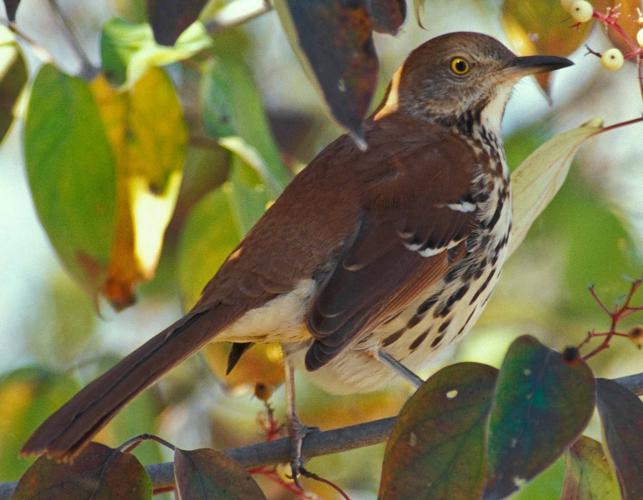
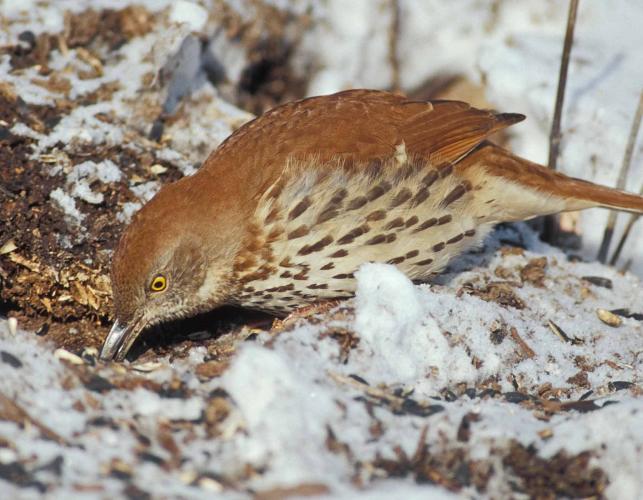
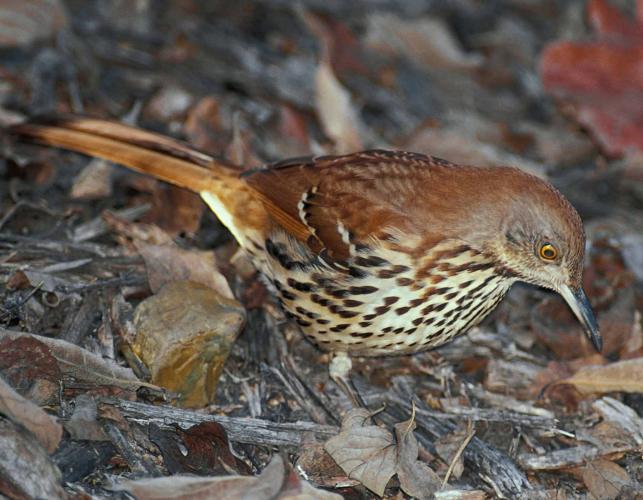
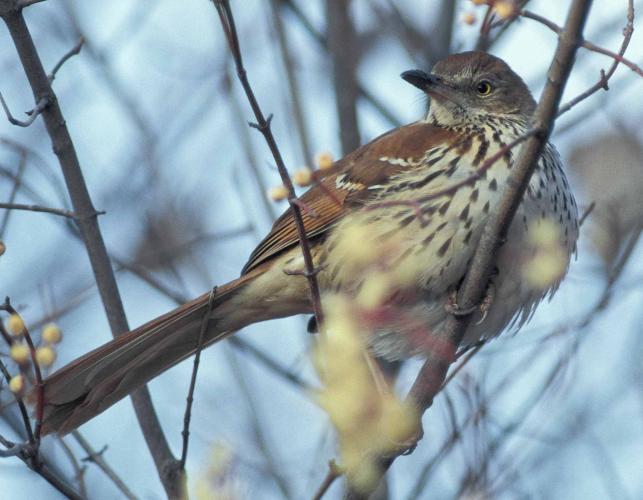
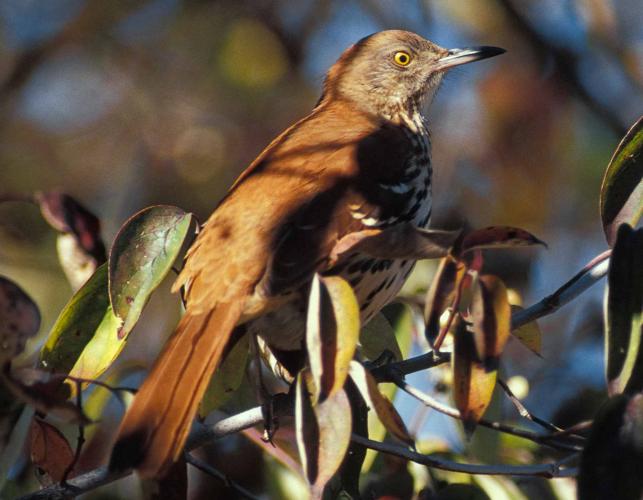
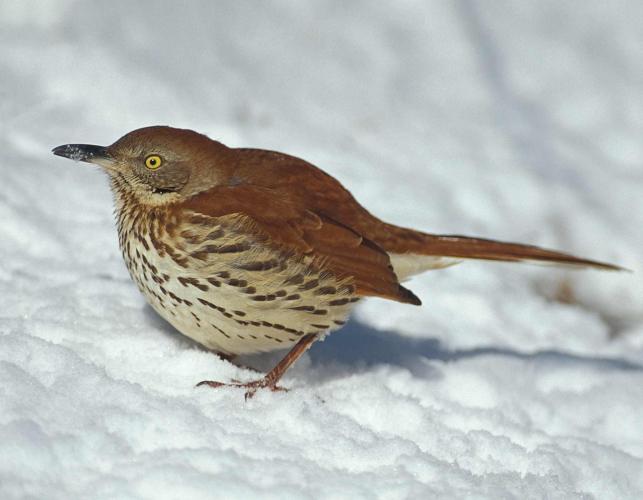
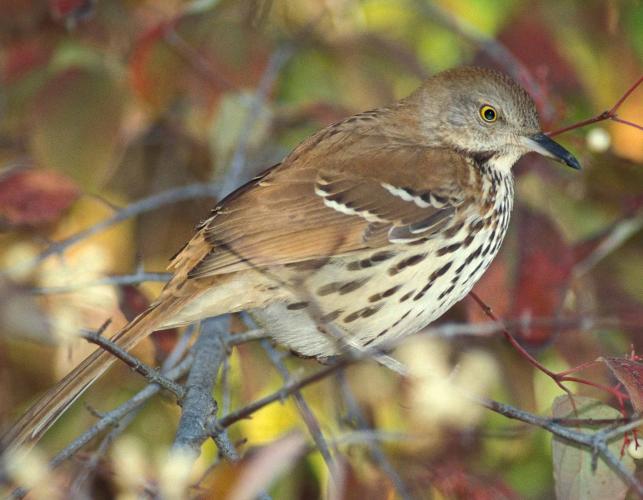
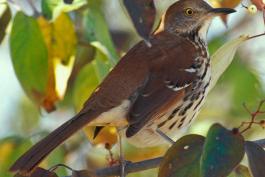
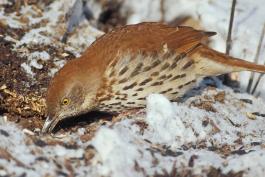

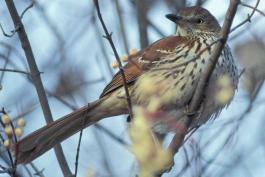
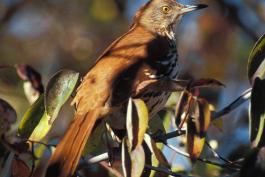
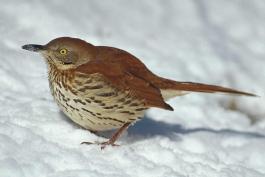
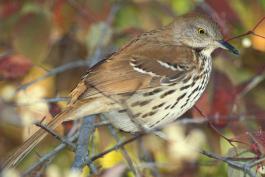
About 350 species of birds are likely to be seen in Missouri, though nearly 400 have been recorded within our borders. Most people know a bird when they see one — it has feathers, wings, and a bill. Birds are warm-blooded, and most species can fly. Many migrate hundreds or thousands of miles. Birds lay hard-shelled eggs (often in a nest), and the parents care for the young. Many communicate with songs and calls.






















